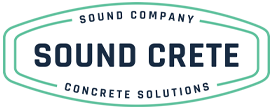General Contractors Guidelines & Requirements
Northern California PDF >
Southern California >
Arizona PDF >
Nevada PDF >
Requirements Prior to Installation:
- The wood and concrete subfloor shall be structurally sound, broom clean, and contaminant-free.
- The subfloor must be adequate to withstand live and dead loads with a deflection limitation of L/360.
- Before installation, the general contractor shall inspect the wood floor for proper nailing. Any wood weakened or delaminated during construction shall be replaced.
- Base Plates at interior doorways and other openings are to be removed.
- Pour stops or block outs for toilets, fireplaces, stair landing, etc. need to be installed by G.C. at the contracted underlayment thickness for each floor/ceiling condition and sealed to prevent leakage.
- Floor penetrations should be caulked by others.
- Substrate flat and level. The underlayment is a very fluid material during the installation process. Therefore, it will follow the contour of the existing substrate. Correction of substrate “out of level” or excessive undulation is not included unless stated in the contract.
Pre-Pours, Tubs, and Voids
- These pours are necessary to install the underlayment at any area not easily accessible during production pours and are to be poured before the Drywall, tubs, fireplaces, etc. are installed.
- Sealing and blocking around penetrations is to be done by G.C. or another trade.
- Pre-pours will not be done after the install of tubs or any other closures. Pouring blind and under tubs sound will not guarantee proper coverage of the Gypcrete and therefore not guarantee the fire or sound ratings.
Production Pours
- If floor has been “wet mucked” in order to clean up after taping and texturing, the substrate needs to be 100% dry prior to underlayment installation.
- Building(s) must be enclosed, including roof, windows, and doors. Unless tenant finish requirements dictate otherwise, the optimum installation is after drywall, tape, and texture, but before painting. If this work is scheduled prior to drywall, tape, texture, or paint, precautions need to be taken to protect the underlayment from water intrusion (mucking), surface damage.
